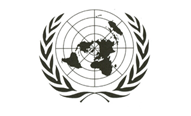How to
Short guide about how to use the Charter for Innovation, Creativity and Access to Knowledge
Step 1
Your recipients are all the entities or institutions that are involved in some way in the legislation or diffusion of topics related to author rights, knowledge distribution or access to the Internet:
– Ministry (Culture, Education, Justice, Technology, Commerce, etc.).
– Political parties.
– Deputies.
– Senators.
– City mayors.
– Lawyers.
– Judges.
– Lawyers or judges’ associations.
– Defender of the citizen.
– City council and regional advisers (Culture, Education, Justice, Technology, Commerce, etc.).
– Consumers’ associations.
– Universities (professors, students, deans, etc.).
– Unions.
– Businesspeople.
– Multinationals.
– Any other personality or organization that you think can be interested in the topic or that you consider that should get some information.
Step 2
Send them a letter explaining what is the Charter for Innovation, Creativity and Access to Knowledge and ask them for a face-to-face appointment to explain it to them personally.
Something like:
“Dear Mr./Ms.:
More than 100 specialists and important organizations coming from 20 countries have created the Charter for Innovation, Creativity and Access to Knowledge .
It’s the Magna Carta for the respect of the civil rights of citizens and artists in the digital era. The objective is to create a legal framework to allow a sustainable and fruitful development in the context of the new digital paradigm.
This Charter is already being used by the European Community and the governments of several countries.
For all this, we ask you for an appointment to explain and debate this Charter in detail, which is a list of recommendations, measures and requirements reflecting the opinion of a broad range of the civil society, concerned about the new law proposal and that is necessary to implement.
We think that it’s vital that you be familiar with and use this document.
Greetings,
Signatures”
Attach a copy of the Charter, that you can download from the website.
Step 3
Phone the place you’ve sent the letter to confirm the appointment. Remember that, if you don’t phone, the sending will have been in vain.
Better, for them to listen to you, you can speak in the name of a group.
If they don’t want to meet you, tell them that they have to keep it in mind anyway, because it’s being used worldwide.
They won’t do that. In this case, it’s interesting that they receive the Charter from more people. As a rule of thumb, the more, the better.
The objective is to convince them. It’s a hard to get objective, so it’s enough if they know that a lot of people know that they know about it and that they will watch their movements. This is enough for them not to ignore it at least.
Step 4
Spread the Charter among the interested people so they can use it in their environments and for their claims. Sometimes, depending on the context, the whole Charter is not necessary, but only an specific part instead.

